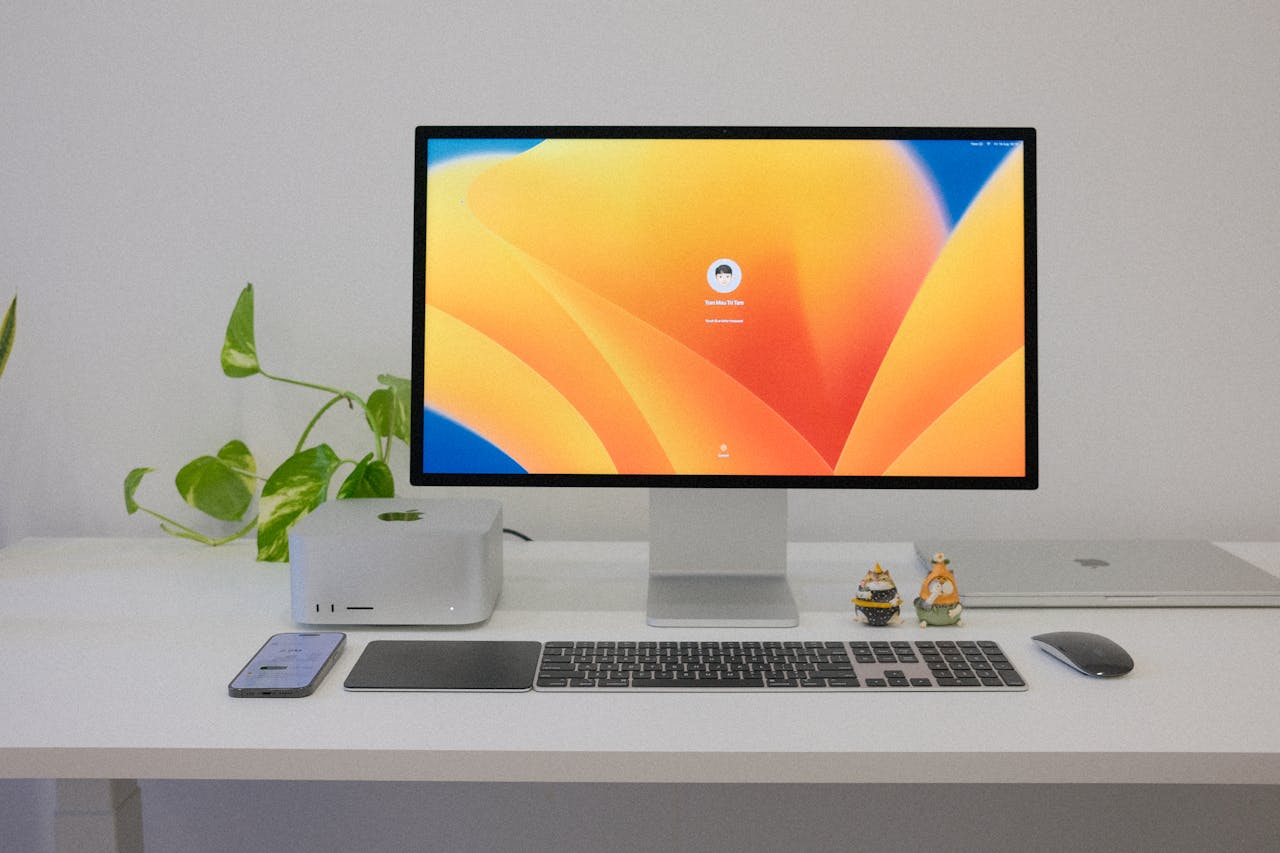Exploring the Key Variances Between Branded and Assembled Computers

Choosing between branded and assembled computers can be a tough decision for many. Are you trying to figure out which option will give you the best bang for your buck? One key fact to consider is that branded computers come from major manufacturers with everything pre-selected for you, while assembled computers are built from scratch based on your preferred specifications.
This article aims to shed light on the differences in quality, cost, flexibility, and support between these two types of computer systems. By understanding these variances, you’ll be better equipped to make an informed choice that aligns with your needs and budget.
Ready to find your perfect fit?
Key Takeaways
- Branded computers come from big companies and are ready to use with warranties but have less room for customization.
- Assembled computers let you pick your own parts for a custom build, possibly saving money or spending more on high-end components.
- Quality in branded computers is consistent because of standard parts, while assembled computers vary based on the chosen pieces.
- With an assembled computer, you get more freedom to design your system but might have to deal with more upkeep and troubleshooting without direct brand support.
Definition of Branded and Assembled Computers
Branded computers are pre-built by major manufacturers, while assembled computers are built from individual parts.
Branded computers are pre-built by major manufacturers
Major manufacturers handle the production of branded computers. These companies ensure that every system comes with fixed components, setting a standard for quality and reliability.
For those who prefer a device ready to use right out of the box, prebuilt computers from well-known brands offer this convenience. Often these brands include warranties and customer support, making them a reliable choice for consumers who value peace of mind.
Assembled computers invite consumers into the world of custom-built systems. Unlike their branded counterparts, which come with a set price tag due to the brand name, assembled PCs allow individuals to handpick hardware components like processors, RAM, and graphics cards.
This process not only tailors a computer to one’s personal needs but also introduces an avenue for flexibility in hardware configuration and potential cost savings.
Assembled computers are built from individual parts
Assembled computers are built by purchasing individual parts from various retailers and then putting them together. These parts typically include the motherboard, storage drive, RAM, and peripheral devices.
The customization of assembled computers allows for tailored technology solutions based on specific needs and preferences. This flexibility in choosing computer components distinguishes custom-built computers from pre-configured branded systems.
The process of assembling a computer involves selecting the appropriate hardware components such as the processor, storage drive, motherboard, and peripheral devices to meet specific requirements.
Understanding this variance can help consumers make an informed decision regarding their computing needs while navigating through the complexities of purchasing a new system.
Moving on to – “Variances in Quality“.
Variances in Quality
Branded computers offer higher quality and reliability compared to assembled ones. Assembled computers might have varying levels of quality based on individual parts used.
Branded computers have higher quality and reliability
Branded computers, created by major manufacturers, offer superior quality and reliability compared to their assembled counterparts. These computers come with standardized components carefully engineered for consistency and performance.
This ensures a higher level of dependability that users can rely on for their computing needs, giving them peace of mind when it comes to the durability and longevity of their system.
The specific components in branded machines are meticulously designed and tested to meet strict quality standards, ensuring a reliable computing experience for users over time. These high-quality parts make branded computers a trusted choice for individuals seeking top-tier performance and long-term reliability in their computing devices.
Assembled computers may have varying levels of quality based on individual parts
When comparing branded and assembled computers, it’s important to note that the quality of assembled computers can differ based on the individual parts used in their construction. Unlike branded computers with standardized components, custom-built systems allow users to choose each part according to their specific needs, which can impact overall quality and performance.
It’s crucial for consumers to carefully select high-quality components such as random access memory (RAM), hard drives, and other computer hardware to ensure optimal system assembly.
The diversity in options may lead to a disparity in the reliability and performance of assembled computers depending on the selection of parts by individuals or smaller companies that assemble these systems.
Consequently, thorough consideration and understanding of key components like RAM speed, hard drive capacity, processor capabilities are essential for achieving desired computer performance while maintaining overall system dependability.
Cost Differences
Branded computers have a fixed cost, while assembled computers may have a lower overall cost but can also be more expensive if high-end parts are used. You want to understand how these differences can impact your budget and the performance of the computer you choose.
Branded computers have a fixed cost
Branded computers come with a fixed cost, meaning that the price remains constant regardless of individual components or specifications. This fixed pricing is set by the manufacturer and generally reflects the brand’s reputation and associated quality, with little room for negotiation or customization.
As a result, consumers can easily compare prices across different retailers for the same branded computer model to ensure they are getting the best deal. In contrast, assembled computers may offer more flexibility in terms of cost as users have the ability to select individual components based on their budget and preferences, potentially resulting in a lower overall cost.
By understanding this key difference in pricing structure between branded and assembled computers, individuals can make informed decisions when considering which option aligns best with their specific needs and budget constraints.
Assembled computers may have a lower overall cost but can also be more expensive if high-end parts are used
Assembled computers generally have a lower overall cost compared to branded computers. However, if high-end parts are used in their assembly, the cost can significantly increase. This is because high-quality components like advanced processors and graphics cards come with a higher price tag, impacting the total cost of the assembled computer.
Hence, while initial costs may be lower for assembled computers, incorporating top-tier parts can escalate the overall expense.
This variance showcases that although assembled computers often present a more affordable option at first glance, users who opt for premium or cutting-edge components will find themselves paying a hefty sum for their custom-built system.
Therefore, individuals considering assembling their own computer should carefully weigh the potential financial impact of selecting high-end parts against any perceived savings from building it themselves.
Flexibility and Customization
Assembled computers offer extensive customization options for selecting parts, providing users with flexibility in building a system that suits their specific needs and preferences.
This can lead to further reading about how assembled computers allow users to tailor their systems to meet individual requirements.
Assembled computers allow for more customization and flexibility in choosing parts
When building an assembled computer, you have the liberty to select and personalize specific components such as the processor, RAM, and storage according to your needs. This customization enables you to optimize the performance of your system based on your usage requirements and budget constraints.
Furthermore, it allows for a tailored approach towards creating a computer that aligns with your specific needs without being confined to pre-set configurations. By taking advantage of this flexibility, individuals can curate a bespoke computer that caters to their unique preferences and computing demands.
The ability to customize parts in assembled computers also extends beyond just functionality; it includes personalization options related to aesthetics. Users can choose from various designs, colors, and features for casings, cooling systems, lighting effects, which adds an additional layer of customizability not typically present in branded computers.
This level of flexibility results in a truly tailored computing experience where every component is handpicked to suit individual tastes and practical needs.
Branded computers may have limited options for customization
Branded computers often offer limited choices for customization as they come with pre-configured components from the manufacturer. This means that users may have fewer options to tailor the computer to their specific needs and preferences, particularly when it comes to selecting specific hardware components such as RAM, storage, or graphics cards.
As a result, those seeking custom-built computers tailored towards their individual requirements might find branded options restrictive in terms of flexibility and personalization.
Assembled computers provide more freedom for customization and are preferred by individuals who seek bespoke configurations based on their unique computing needs. Unlike branded computers, custom-built systems allow users to handpick each component according to their performance requirements and budget constraints.
The ability to select specific parts offers enhanced flexibility in tailoring a system that aligns with personal preferences, making assembled computers an attractive choice for those looking for a tailored computing solution.
– Maintenance and Support
Maintenance and Support
Branded computers typically come with warranties and customer support. Assembled computers may require more troubleshooting and self-maintenance.
Branded computers typically come with warranties and customer support
Branded computers, typically offered by major manufacturers like Dell or HP, come with warranties and customer support. These warranties often cover hardware malfunctions and certain technical issues for a specific period after purchase.
Additionally, the customer support provided by these companies offers assistance in troubleshooting problems and addressing any concerns that may arise during the usage of their branded computers.
Assembled computers, on the other hand, may not always come with such extensive warranties or dedicated customer support. This is because they are built from individual parts purchased from different retailers or manufacturers, which can make it more challenging to obtain comprehensive warranty coverage and specialized technical assistance similar to what is available with branded computer systems.
Nevertheless, some retailers who sell assembled computers do offer their own forms of limited warranties and support services directly to customers.
Assembled computers may require more troubleshooting and self-maintenance.
Assembled computers often need extra attention and care, especially when it comes to troubleshooting and maintenance. Since they are made up of individual parts from various sources, ensuring that each component functions well together is crucial for optimal performance.
To keep an assembled computer running smoothly, regular self-maintenance such as cleaning internal components and checking for loose connections is essential in preventing potential issues.
It’s common for built PCs to require more troubleshooting compared to branded ones due to the possibility of compatibility issues between different hardware components. As a result, users may need to dedicate more time towards identifying and resolving any arising technical problems.
This hands-on approach also includes being proactive in keeping software updated and implementing necessary system tweaks or adjustments tailored towards specific needs. Random access memory (RAM) plays a vital role in the overall functionality of custom-built computers; therefore, understanding its importance is crucial for individuals navigating this realm of electronics.
Conclusion
Branded computers and assembled computers have key differences in quality, cost, flexibility, and maintenance. Consider these factors when deciding between the two options. The practicality of customizing an assembled computer to fit specific needs can be more efficient than settling for a fixed configuration.
How will you apply this knowledge when choosing your next computer? Understanding these variances is crucial for making an informed decision that meets your computing requirements efficiently.
Take charge of your purchase by considering the impact each type of computer can have on your user experience. Now, explore further resources to deepen your understanding before making a decision.
FAQs
1. What is the difference between branded and assembled computers?
Branded computers are made by known companies with their parts chosen for you, while assembled computers are custom-built by selecting your own parts like random access memory (RAM) and more.
2. Can I choose my computer’s parts if I go for an assembled computer?
Yes, when you pick an assembled computer, you get to customize it by choosing each part yourself, which lets you focus on what’s important for your needs.
3. Are branded computers better than custom-built ones?
Not necessarily! Branded computers offer reliability and support from well-known brands, but custom-built computers allow for greater customization and potentially better performance suited to specific tasks.
4. How do I know if a custom-built or a branded computer is right for me?
Consider what you need from your computer. If you want specific features or high performance tailored to certain tasks, a custom-built might be best. If you prefer ready-to-use reliability with customer support, go for a branded option.





